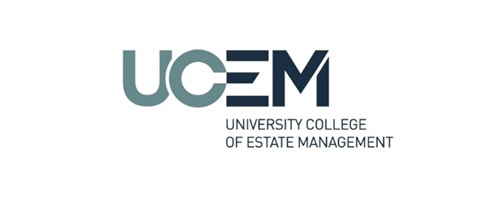Rushmer and others v Central Bedfordshire Council
Nicholas Thompsell (sitting as a deputy High Court judge)
Common land – Registration – Jurisdiction – Claimants owning adjoining properties close to common land – Claimants seeking declarations as to extent that register of common land maintained by defendant commons registration authority capable of challenge in High Court – Whether court having jurisdiction to determine what register of common land comprised and to clarify or correct it – Strike-out application dismissed – Declarations made in part.
The claimants were two couples who owned adjoining properties on Church Road in the village of Studham close to Studham Common in Bedfordshire. The defendant was the commons registration authority for the area that included the common. As such, it was responsible for maintaining a common land register open for inspection by members of the public at all reasonable times under sections 1-3 of the Commons Registration Act 1965.
The claimants became concerned that the relationship between their land and the common was unclear. They inspected the defendant’s register of common land in April 2022 and noted a series of anomalies and apparent deficiencies within the register, and that the map purporting to show the bounds of the common was not consistent with certain previous representations made by the defendant as to the bounds of the common land.
Common land – Registration – Jurisdiction – Claimants owning adjoining properties close to common land – Claimants seeking declarations as to extent that register of common land maintained by defendant commons registration authority capable of challenge in High Court – Whether court having jurisdiction to determine what register of common land comprised and to clarify or correct it – Strike-out application dismissed – Declarations made in part.
The claimants were two couples who owned adjoining properties on Church Road in the village of Studham close to Studham Common in Bedfordshire. The defendant was the commons registration authority for the area that included the common. As such, it was responsible for maintaining a common land register open for inspection by members of the public at all reasonable times under sections 1-3 of the Commons Registration Act 1965.
The claimants became concerned that the relationship between their land and the common was unclear. They inspected the defendant’s register of common land in April 2022 and noted a series of anomalies and apparent deficiencies within the register, and that the map purporting to show the bounds of the common was not consistent with certain previous representations made by the defendant as to the bounds of the common land.
In July 2022, the claimants filed a Part 8 claim form seeking declarations as to the extent and boundaries of the common. Among other things, the claimants complained that the defendant had adopted different positions at different times as to its certainty regarding the correct map identifying the registered extent of the common. A question arose whether a map of the common from October 1967 or one from December 1967 was to be preferred.
They also asked for confirmation as to the bounds of the Scheme for the Regulation and Management of Studham Common 1911.
The defendant applied to the court to strike out the claim under CPR 3.4, chiefly on the basis that the relief sought was beyond the High Court’s jurisdiction.
Held: The strike-out application was dismissed. The declarations were made in part.
(1) The defendant based its striking-out application chiefly on the basis that the relief sought was beyond the High Court’s jurisdiction.
Under the 1965 Act, parliament charged the defendant with determining the extent of commons within its areas. The High Court had only limited powers to rectify the register under section 14 of the 1965 Act, and amendments in section 19 of the Commons Act 2006, in certain circumstances, none of which applied in this case: no fraud had been alleged and there had been no amendment under section 13 of the 1965 Act.
The legislation clearly implied that the court should not intervene outside the limited powers afforded to it by section 14 of the 1965 Act and section 19(7) of the 2006 Act. Outside the circumstances allowed by those sections, the court should not seek to involve itself in correcting a register that had been adopted by a commons registration authority. That process was reserved to the commons registration authority, and decisions of that authority could be challenged only by means of a remedy in administrative law, where that was available against the relevant authority.
(2) Parliament had determined that those matters were to be dealt with by the commons registration authority rather than by the court. It would be an abuse of process for the court to seek to approve any such correction.
That limitation extended also to the question of any clarification of the register. As a result of the extended definition of “mistake” in section 19(3) of the 2006 Act, the proper process for clarifications also had been granted to the commons registration authority rather than to the court.
However, determining what constituted the register, where something cast doubt on whether the documentation held by the commons registration authority was the authentic register, was a determination that the court could and should be ready to make.
(3) In O’Reilly v Mackman [1983] UKHL 1; [1983] 2 AC 237, the House of Lords held that, as a general rule, it was contrary to public policy, and as such an abuse of process, for a person seeking to establish that a decision or action of a person or body infringed rights which were entitled to protection under public law, to proceed by way of an ordinary claim rather than the judicial review procedure, thereby evading the provisions intended to protect public authorities.
In the current case, there was potentially a conflict between private right (the claimants’ rights of property) and public rights (public enjoyment of the common) and in view of the fluid state of the law as described in CPR 54.3.2, notwithstanding O’Reilly v Mackman, the court was left to decide in this case whether it was more apt for such matters to be dealt with within the High Court or pursued under a different action under Part 54 of the White Book.
In the present case, the issue would be decided in the claimant’s favour. The matters under consideration did not really relate to a decision or action of a public authority, but rather to providing a statement as to the true contents of the commons register: there was therefore real doubt whether the principle in O’ Reilly applied at all.
(4) It was clear from cases like Bettison v Langton [2001] UKHL 272; [2001] PLSCS 120; [2002] 1 AC 27 that the processes within the High Court were more tailored to dealing with the points in question here; the defendant’s challenge to the authority of the High Court to deal with this point came at a very late stage in the proceedings and it would be contrary to the overriding objective in CPR 1.1 of dealing with a case justly and at proportionate cost if the court were to refuse to hear this case now that it had got this far.
Accordingly, the strike-out application would be dismissed on the basis that the court would consider the claimants’ case in relation to the correct constituents of the register in relation to the common but would not accept any invitation to clarify or amend the borders of the common shown on the register as so determined.
(5) The evidence that the copy of the December 1967 map was a copy of the map originally adopted as the relevant statutory provisional register map was overwhelming. It bore all the hallmarks one would expect of the map, while the October 1967 map failed in its basic duty of delineating the common and failed to comply in various ways with the Commons Registration (General) Regulations 1966. It was unsigned, bore the wrong date and did not bear the correct reference number referred to in the statutory register.
Given a choice between two maps, neither of which had undoubted provenance but where one followed the 1966 Regulations and the other did not and failed on its face to depict the limits of the common, the court would choose the former. Accordingly, a declaration would be made to that effect.
(6) The 1911 scheme was made under section 1 of the Commons Act 1899, which predated the 1965 Act but was not abolished by it. Based on well-recognised principles of statutory interpretation, the reference to “common” in the 1899 Act had to be taken as referring to what was a common from time to time.
It would be unworkable, impracticable, inconvenient and anomalous to interpret the 1899 Act as applying to land that had been common land in 1899 but was no longer common land at the time the Act was to be applied: Shannon Realties Ltd v Ville de St Michel [1924] AC 185, Hedley Byrne & Co Ltd v Heller & Partners Ltd [1964] AC 465, R (on the application of Quintavalle) v Secretary of State for Health [2003] UKHL 13; [2003] 2 AC 687 and Moorthy v Revenue and Customs Commissioners [2018] EWCA Civ 847 applied.
A declaration would be made to the effect that the 1911 scheme should apply in relation to the common as it was recognised by law in accordance with the 1965 Act, and if there was any conflict between the plan defined in the 1911 scheme and the 1967 map (or any later map that might be adopted in accordance with the 1965 or 2006 Acts or any later legislation) the bounds of the common should be taken as those most recently determined by law.
(7) Those determinations applied only to the part of the register in issue. As regards the remainder of the commons register maintained by the defendant, and other commons registers, those registers remained subject to the presumption of regularity explained in Calder Gravel Ltd v Kirklees Metropolitan Borough Council [1990] 2 PLR 26.
Paul Wilmshurst (instructed by Direct Access) appeared for the claimant; Matthew Feldman (instructed by Pathfinder Legal Services) appeared for the defendant.
Eileen O’Grady, barrister
Click here to read a transcript of Rushmer and others v Central Bedfordshire Council










